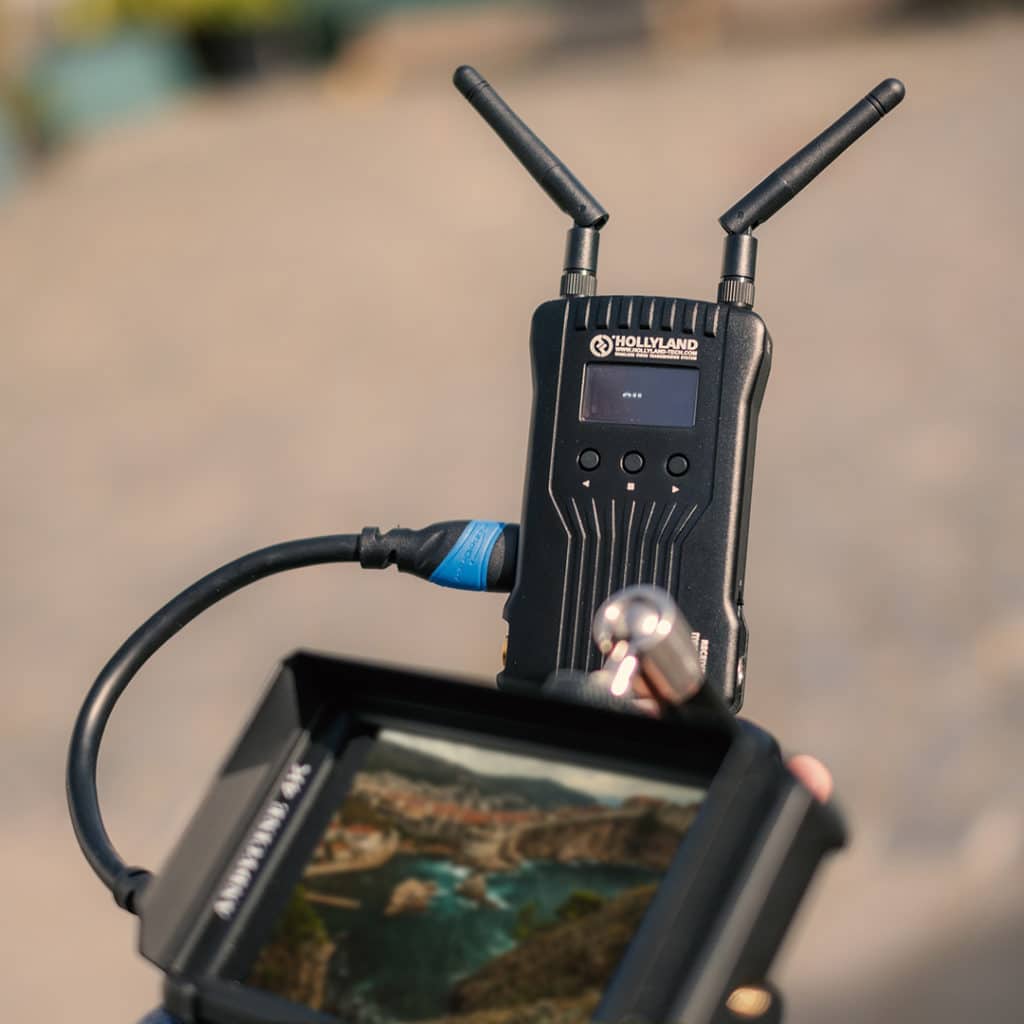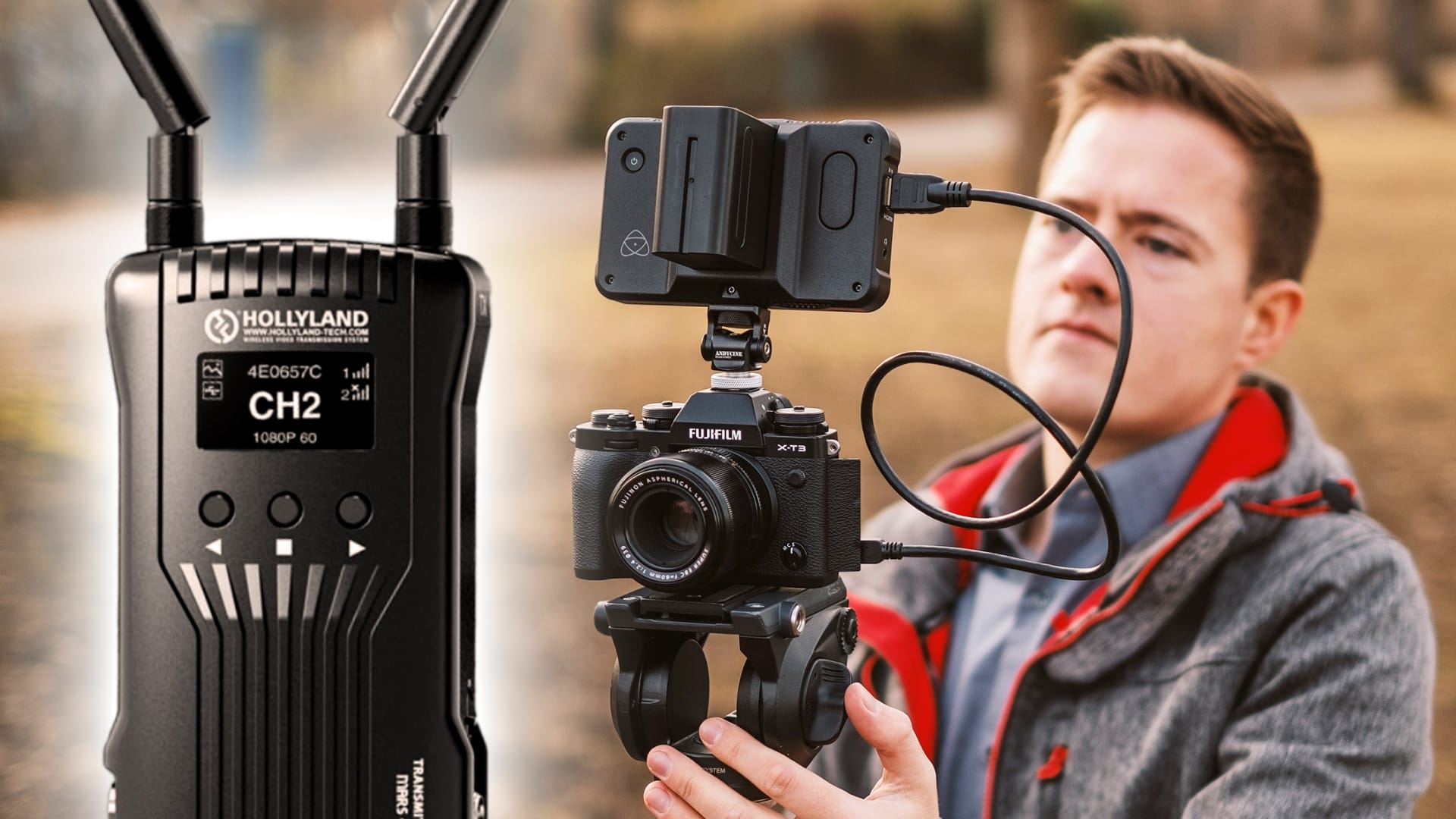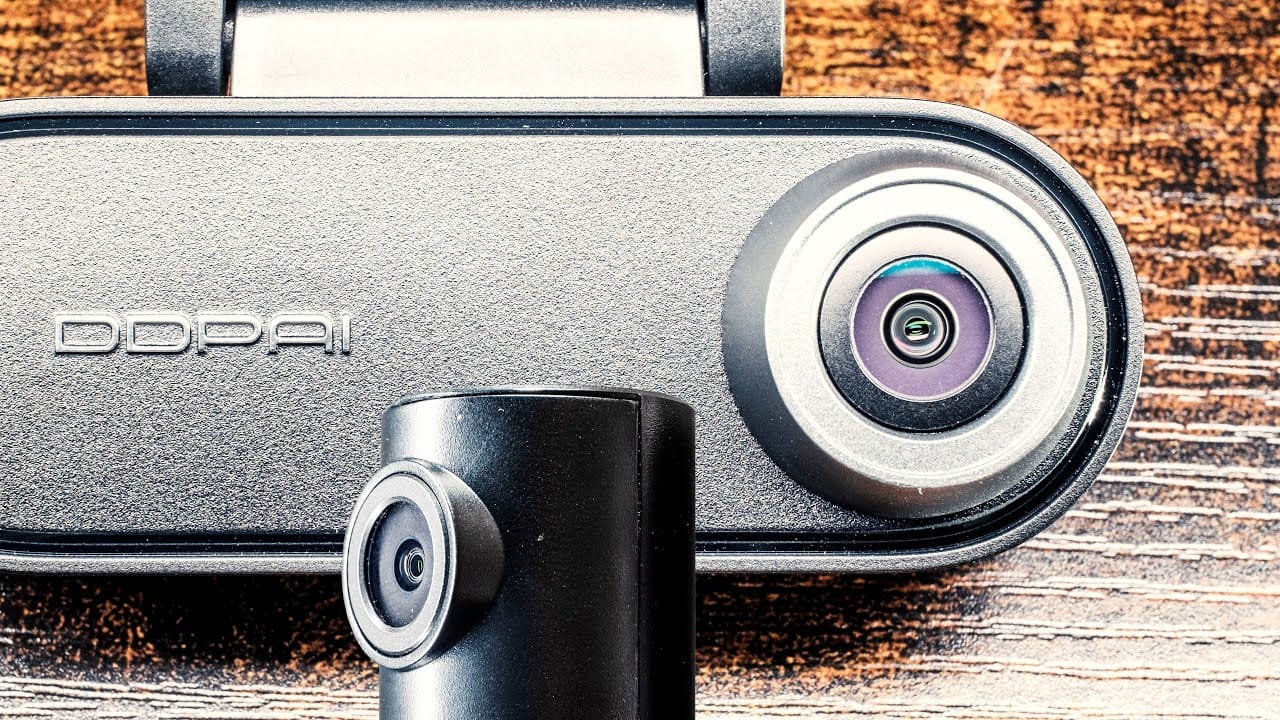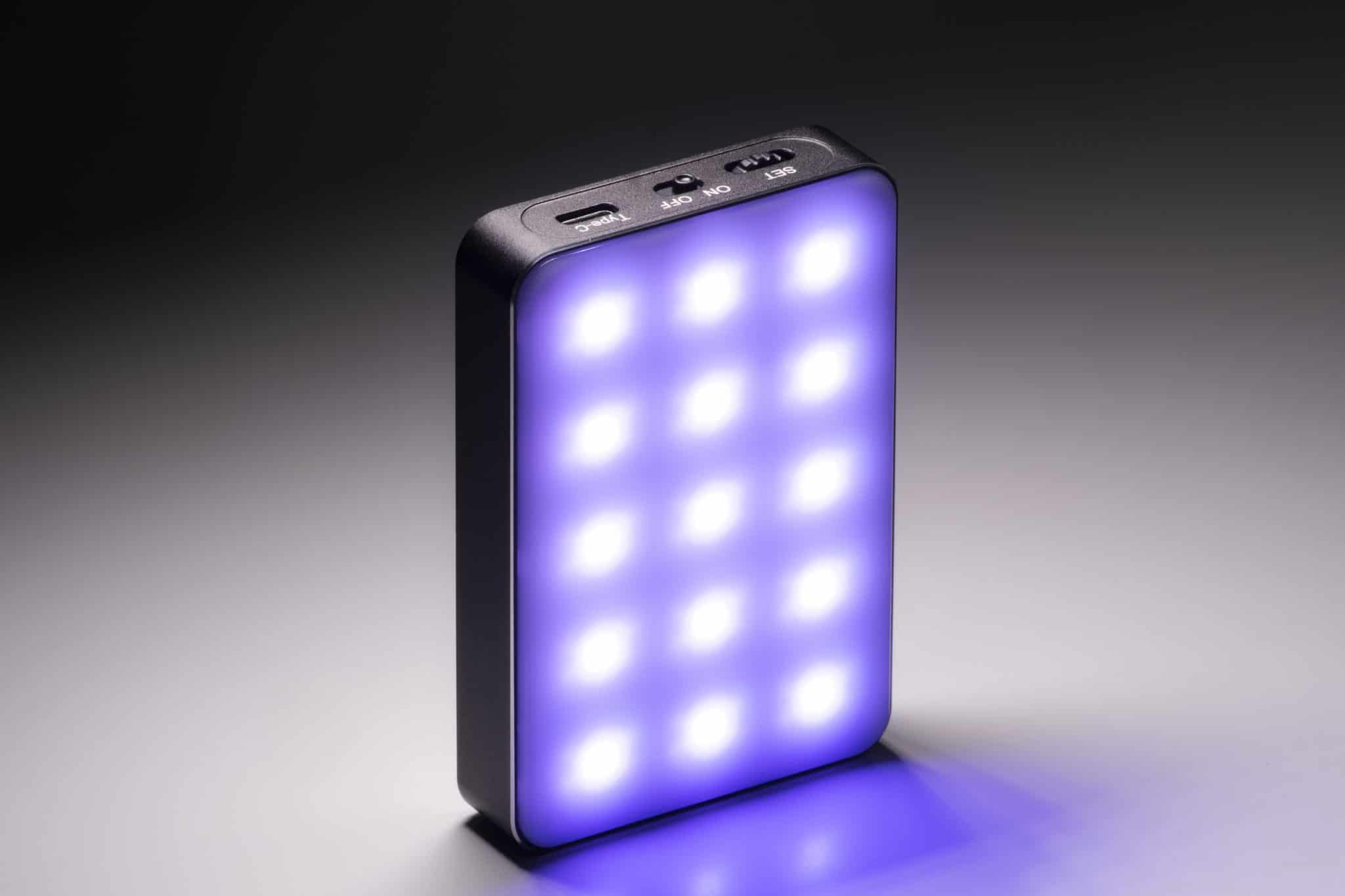Just a few years ago I got my hands on some brand-new wireless video transmitters. At first, I didn’t expect much because for me it seemed like magic to get a video signal on an external monitor without a cable physically connecting it with a camera.
And unfortunately, I was right. The gear I was testing worked only partly in close range distance and with a lag of one or two seconds. So in the end I never used it on any production.
Luckily tech is constantly evolving, and I recently decided to give a new setup a try. A wireless video transmitting unit from Hollyland, called Mars 400s.
The Mars 400s consists of two devices: A transmitter that is connected with the camera and a receiver that is plugged in to the monitor. It works both with HDMI and SDI which means it can be used with pretty much any monitor and camera.
The transmitted signal is maximum 1080p 60p so even if your external monitor supports 4K you will receive an HD signal. And yes, there is a lag but that is mostly due to the HDMI technology and in the past, I had monitors with worse lag even though they were directly plugged in to the monitor. So overall this is nothing to worry about.
The 400s is very easy to use and pretty much connects the two devices by itself. All I need to do is plug in the HDMI or SDI cables and connect them with the camera and monitor and turn all the devices on. But I can also manually choose a channel when working with multiple units.
On the OLED display I can see the channels and frequencies as well as if the devices are connected or not and the screen also shows a warning 30 minutes before the batteries die.
Powering can be done with Sony NP-F batteries which are my favorites because I can also use them on monitors and other gear. These big ones last very long or you can use the DC input which kind of defeats the purpose of a wireless setup but it’s possible.
The built quality is strong sine the transmitter and receiver’s housing are made from metal. Only the antennas are made from plastic but it’s best to remove them after a shoot anyway to avoid any damage.

The size of the two devices is the only thing that sometimes bothers me. Compared to small cameras, the transmitter is rather big especially with the antennas folded out and a battery on the back. This is obviously less of an issue when using a big rig with a cinema camera but something to keep in mind when using a small camera setup.
Hollyland also has a mobile app to view the camera’s video on my phone or tablet. While this is generally a great idea, I personally prefer using a dedicated monitor on set because of brightness and long lasting battery power. But since it can send the signal to up to four phones via WiFi, it’s definitely useful on certain productions.
But I had a few issues where the app was not connecting with some of the phones which is something I don’t want to happen during a shoot. So on our productions we just use a monitor like the Atomos Shinobi or the AndyCine A6.
When we’re on set we don’t always use external monitors but for higher end productions it’s a necessity. Being able to move around freely without someone constantly looking over your shoulder to see what I am shooting can be quite relieving. So having this wireless unit is definitely making a lot of our productions easier because my colleague Marcel can check the directors monitor in safe distance while I am looking at the camera’s monitor. So overall I think the Mars 400s is a well working system, although I wish in the future these devices will become a bit smaller.
Written by filmmaker Moritz Janisch on May 11, 2020


